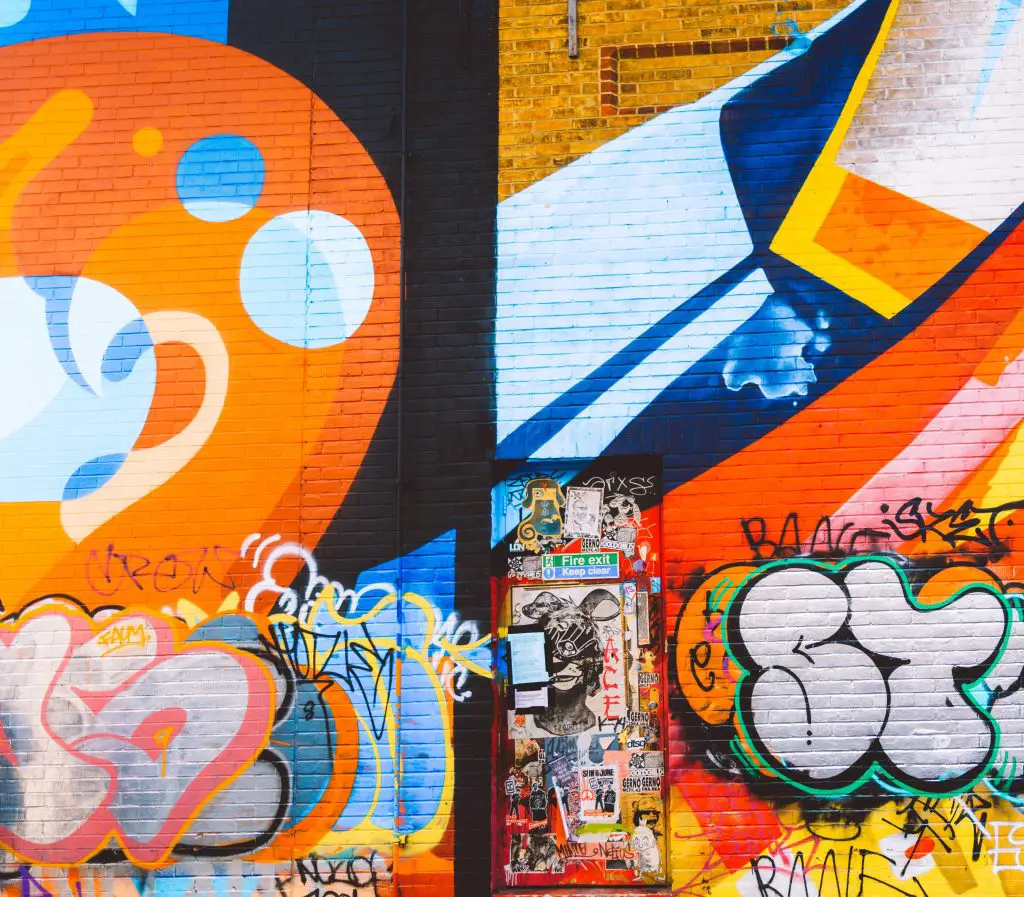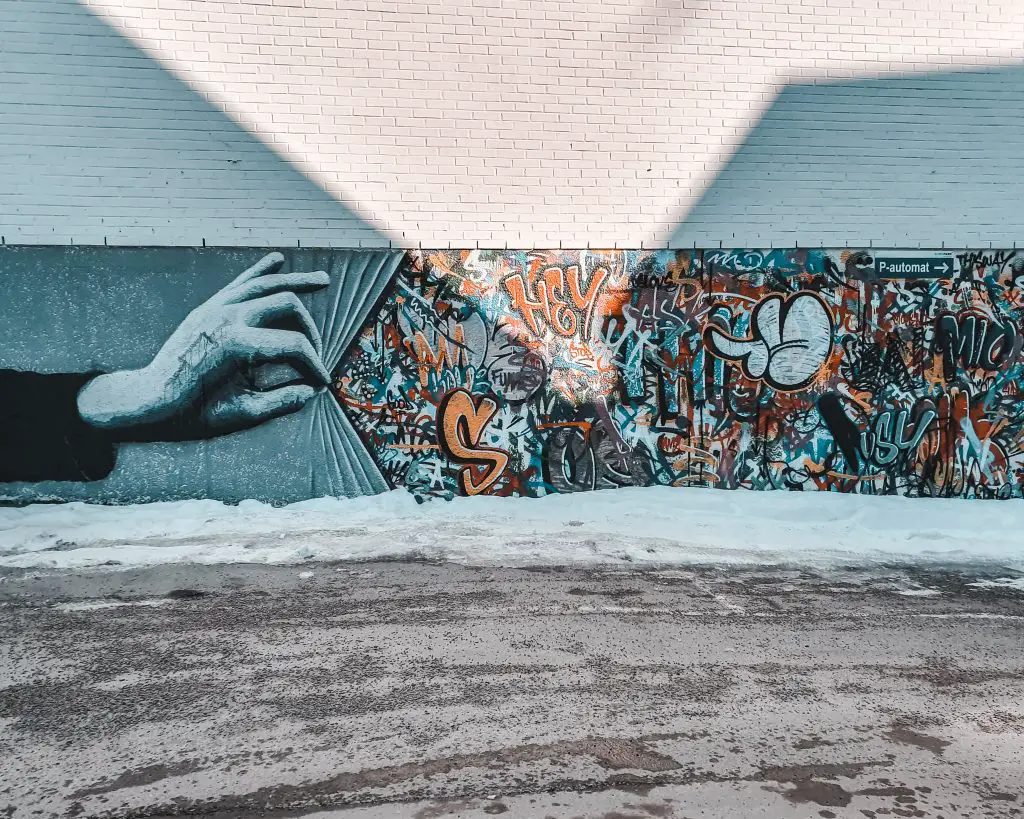Public art has become an increasingly important aspect of urban life in recent years, bringing color and creativity to our cities and towns. Two common forms of public art are murals and graffiti, which can be found on walls and buildings worldwide.
While both murals and graffiti are forms of public art, they have important differences in intent, execution, and legality.
This article will explore the similarities and differences between murals and graffiti art and some of the controversies surrounding these two art forms. We will also examine how to evaluate the quality of murals and graffiti art and explore the motivations behind their creation.
Understanding the Differences Between Murals and Graffiti

What Is a Mural?
A mural is a painting or other artwork executed directly on a wall, ceiling, or large permanent surface. Murals are often found in major cities and public buildings, ranging from simple designs to complex works of art.
What Is Graffiti?
Graffiti is a type of street art that has been around for centuries, with examples found in the ruins of Pompeii. Most graffiti can be simple messages, political statements, or more complex and elaborate murals painted with paint rollers or spray cans. The term “graffiti” comes from the Italian word “graffito,” meaning “scribbled.”
Differences Between Murals and Graffiti

While murals and graffiti are both forms of street art, they have some key differences.
Scale and Level of Detail
One of the main differences is the scale and level of detail. Murals tend to be larger in scale and more complex, often featuring intricate patterns and color schemes.
In contrast, graffiti art is often more spontaneous and expressive, focusing on words and images over formal composition.
Legalities and Permission
Another important difference is the legality and permission involved in creating the art. Murals are typically commissioned with permission and support from the community or property owner and are intended to beautify or enhance the space.
Graffiti art, on the other hand, is often done without authorization and can be considered vandalism. Another key difference between graffiti and street art is that street art is commonly done with permission. For example, a street artist might paint a mural on the side of a building with the building owner’s permission.
Materials and Techniques
A key indicator of graffiti art is that most used art materials are spray cans. Most importantly, to distinguish this street art, they usually utilize a variety of colors in artwork, bubble formats in words, or a combination of icons and letters.
Examples of Street Art
Two examples of street art are murals and graffiti. Initially, the artists took their cue from graffiti in making the streets their canvas as a statement against the existing establishments. Their works usually carry some overarching message for the public. Street art is generally painted with permission or commissioned. Street art is no longer rejected as merely deleterious graffiti or vandalism. Instead, it can be the source of civic pride, public artistry, and outdoor engagement in cities across America.
Evaluating the Quality of Murals and Graffiti Art
One way to evaluate the quality of a mural or graffiti piece is to look at the artist’s technical skill and mastery of composition. High-quality art is often visually stunning, with clean lines, well-mixed colors, and a sense of depth and perspective.
The best artists can create complex images that are aesthetically pleasing and convey a clear message.
In contrast, low-quality art is often crudely executed and lacks artistic merit. Another way to evaluate public art is to consider its impact on its surroundings.
High-quality art enhances its surroundings and brings joy to viewers. It can add a sense of beauty and vibrancy to a space and may incorporate meaningful or thought-provoking themes or messages. In contrast, low-quality art can be an eyesore and cheapen the appearance of a neighborhood. It may lack visual interest or fail to convey a meaningful message or theme.
Ultimately, the best way to evaluate public art is to use your judgment. If a piece speaks to you and makes you happy, it is probably good art.
In contrast, if a piece offends you or makes you feel uneasy, it is perhaps not high-quality art. Personal taste is an important factor in evaluating public art, and individuals may have different preferences regarding style, themes, and techniques.
Who Creates Murals and Graffiti Art, and Why Do They Do It?
Most muralists are self-taught artists who use their art to express themselves and communicate messages to the public. For many, mural painting beautifies their community and positively impacts the people there. Murals can also be used to commemorate individuals or groups.
They can also raise awareness about social issues or bring joy to those who see them. Graffiti artists can come from disadvantaged backgrounds and use their art as self-empowerment. For many, graffiti is a way to reclaim public spaces that have been neglected or abandoned.
It can also be a form of rebellion against a society that they feel doesn’t understand or appreciate them. Whatever their motives, graffiti artists add color and life to our cities, and the general public often admires their work.
What is the difference between a mural and graffiti? Is one better than the other? In this article, we will explore the difference between murals vs graffiti, and discuss which one is more beneficial for businesses and artists.
Final Thoughts
Murals and graffiti art are two distinct forms of public art found in cities and towns worldwide. While both can be visually stunning and tell a story or convey a message, there are important differences between the two.
Murals are often larger in scale and more complex, created with permission and intended to beautify or enhance a space. Graffiti art is often more spontaneous and personal, often created without authorization and seen by some as vandalism.
Ultimately, the quality and impact of murals and graffiti art can be subjective, with personal taste playing an important role in evaluation. Regardless of opinions on the merits of murals and graffiti art, they remain important aspects of public art that continue to inspire, provoke, and beautify our urban landscapes.
